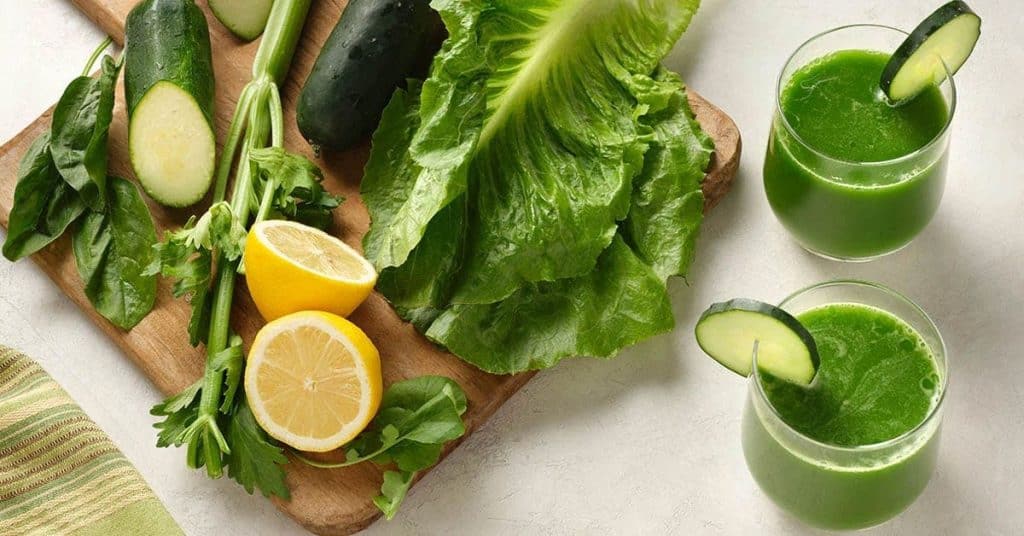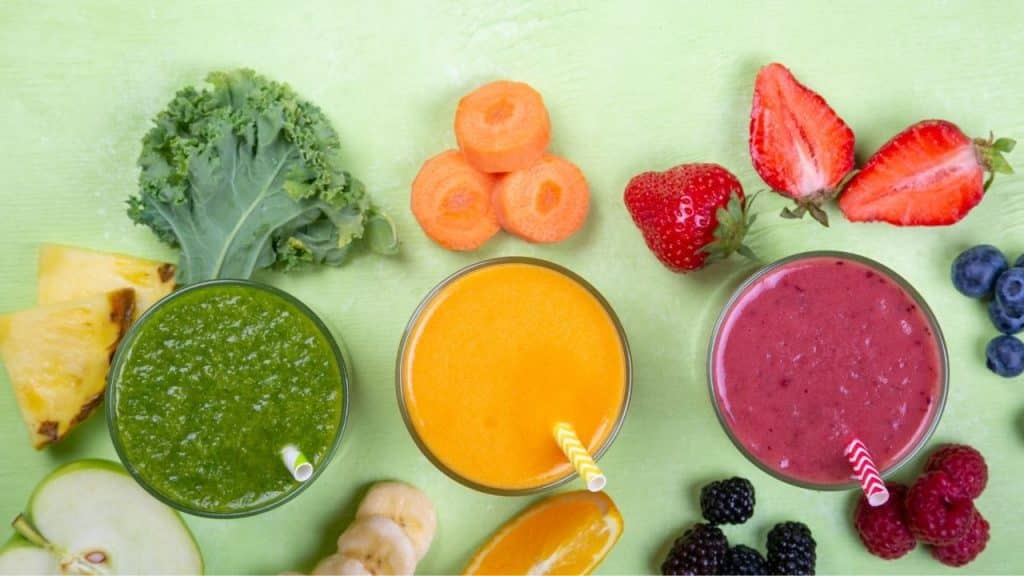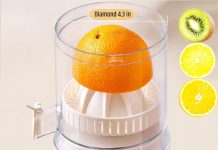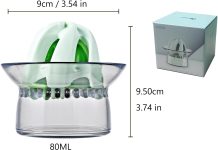In our quest for a healthier lifestyle, juicing has become increasingly popular as a way to get the nutrients and vitamins we need in a refreshing and delicious way. But with the vast array of fruits and vegetables available, it can be overwhelming to know which ones to choose for juicing. Fear not, as we explore the world of juicing, we will guide you through some of the best fruits and vegetables to incorporate into your juicing routine. From vibrant berries and leafy greens to tangy citrus and root vegetables, get ready to discover the perfect combinations to create a vibrant and nutritious juice that will leave you feeling revitalized.
This image is property of images.prismic.io.
Review contents
Best Fruits for Juicing
Citrus Fruits
Citrus fruits are a fantastic choice for juicing due to their refreshing taste and high vitamin C content. Oranges, lemons, limes, and grapefruits are all great options. Citrus fruits add a tangy and bright flavor to your juice, making it a great choice for a morning pick-me-up or to boost your immune system.
Berries
Berries, such as strawberries, blueberries, raspberries, and blackberries, are not only delicious but also packed with antioxidants. These fruits add a sweet and tart flavor to your juice and are known for their anti-inflammatory properties. Berries are also low in calories, making them an ideal choice for those looking to manage their weight while enjoying a flavorful juice blend.
Pineapple
Pineapple is a tropical fruit that adds a tropical twist to your juice. It has a sweet and tangy flavor and is rich in vitamins and minerals, particularly vitamin C and manganese. Pineapple also contains bromelain, an enzyme known for its digestive benefits. Including pineapple in your juice can give it a refreshing and exotic taste.
Watermelon
Watermelon is the perfect fruit for a hot summer day. Its high water content makes it incredibly hydrating and refreshing. It also contains lycopene, an antioxidant that can help protect against certain types of cancer. Watermelon juice is light, sweet, and perfect for quenching your thirst during the summer months.
Apples
Apples are widely available and versatile, making them a popular choice for juicing. They come in a variety of flavors and sweetness levels, from tart to sweet. Apples are rich in fiber and antioxidants, particularly in their skin. They add a natural sweetness to your juice and help to balance out more bitter or savory vegetable flavors.
Pears
Pears are another tasty fruit to consider for juicing. They have a delicate, sweet flavor that pairs well with other fruits and vegetables. Pears are a good source of dietary fiber and vitamin C. Their juice adds a subtle, mellow sweetness to your juice blends.
Grapes
Grapes are not only delicious as a snack but also an excellent choice for juicing. They are high in antioxidants, especially resveratrol, which has been linked to numerous health benefits, including heart health. Grapes come in a variety of colors and flavors, from sweet and juicy red grapes to tangy and crisp green grapes. Including grapes in your juice can add a natural sweetness and a hint of tartness.
Mangoes
Mangoes are a tropical delight and a great addition to your juice. They are rich in vitamins A and C, as well as dietary fiber. Mango juice adds a creamy and tropical flavor to your blends, making them perfect for exotic juices or smoothies. Be sure to choose ripe mangoes, as they will provide the best flavor and juiciness.
Pomegranate
Pomegranates have gained popularity in recent years due to their high antioxidant content. They are packed with vitamin C, potassium, and fiber. Pomegranate juice has a sweet and tangy flavor and can add a vibrant color to your juice blends. However, extracting the juice from pomegranates can be a bit labor-intensive, so it’s often easier to purchase pre-packaged pomegranate juice.
Kiwi
Kiwi is a small fruit with a powerful punch of flavor. It is a good source of vitamin C, vitamin K, and dietary fiber. Kiwi juice adds a tart and slightly sweet flavor to your juice. It pairs well with other fruits and vegetables, particularly in tropical or citrusy blends.
Best Vegetables for Juicing
Leafy Greens
Leafy greens, such as spinach, kale, and Swiss chard, are incredibly nutritious and perfect for juicing. They are packed with vitamins, minerals, and antioxidants, including iron and calcium. Leafy greens have a mild and slightly earthy flavor that can be easily masked by adding sweeter fruits or other vegetables to your juice blend.
Carrots
Carrots are a staple in many juicing recipes due to their vibrant color and natural sweetness. They are an excellent source of vitamin A, vitamin K, and potassium. Carrot juice provides a slightly sweet and earthy flavor to your juice and pairs well with a variety of fruits and vegetables.
Beets
Beets are often touted as a superfood due to their high nutritional value. They are rich in antioxidants, folate, and iron. Beets have a distinct earthy and slightly sweet flavor that can add depth and a vibrant color to your juice. However, their potent flavor may overpower other ingredients, so it’s best to use them in moderation or balance them with sweeter fruits.
Celery
Celery is a low-calorie vegetable that adds a refreshing taste to your juice. It is rich in vitamins A, K, and C, as well as dietary fiber. Celery juice has a mild and slightly salty flavor that can help to balance out sweeter or stronger-tasting ingredients in your juice blends.
Cucumbers
Cucumbers are mostly water, making them incredibly hydrating and refreshing. They are low in calories and rich in vitamins K and C. Cucumber juice has a mild and slightly sweet flavor that contributes to the overall juiciness of your blends. It pairs well with other vegetables and fruits, particularly in light and refreshing juices.
Spinach
Spinach is another leafy green powerhouse that is perfect for juicing. It is loaded with nutrients, including vitamins A, K, and C, as well as iron and calcium. Spinach juice has a mild and slightly grassy flavor that can be easily camouflaged by adding sweet fruits or other vegetables to your juice blend.
Bell Peppers
Bell peppers come in various colors, including green, red, yellow, and orange, and each has its own unique flavor. They are an excellent source of vitamins A, C, and E, as well as dietary fiber. Bell pepper juice adds a crisp and slightly sweet taste to your juice, enhancing the overall flavor profile.
Tomatoes
Tomatoes are not only a versatile ingredient in cooking but also in juicing. They are packed with the antioxidant lycopene, which is known for its potential health benefits. Tomato juice has a savory and slightly tangy flavor that can be enjoyed on its own or combined with other vegetables for a tasty vegetable juice blend.
Ginger
Ginger adds a spicy and warming kick to your juice. It has long been used for its potential health benefits, including reducing inflammation and aiding in digestion. Ginger juice can be quite potent, so a little goes a long way. Start by adding a small amount and adjust according to your taste preferences.
Cabbage
Cabbage is a cruciferous vegetable that is often overlooked when it comes to juicing. It is packed with vitamins C and K, as well as dietary fiber. Cabbage juice has a mild and slightly sweet flavor that pairs well with other vegetables and fruits. It can add a subtle sweetness and a refreshing taste to your juice blends.
Factors to Consider
Taste and Flavor
When choosing fruits and vegetables for juicing, it’s essential to consider the taste and flavor profile. Some fruits and vegetables may have strong or distinct flavors that may not be appealing to everyone. It’s a good idea to experiment with different combinations to find the flavors that you enjoy the most.
Nutritional Content
The nutritional content of the fruits and vegetables you choose for juicing is crucial. Different fruits and vegetables offer various vitamins, minerals, and antioxidants. Consider incorporating a variety of fruits and vegetables into your juice blends to ensure you’re getting a wide range of nutrients.
Ease of Juicing
Some fruits and vegetables are easier to juice than others. For example, citrus fruits are relatively simple to juice, while leafy greens require more effort to extract juice. Factor in the juicing process when selecting your ingredients, especially if you have a preference for quick and convenient juicing.
Availability
The availability of fruits and vegetables can vary depending on your location and the time of year. Choose fruits and vegetables that are readily available in your area to ensure freshness and affordability. Consider seasonal produce for the most flavorful and nutritious juices.
Seasonality
In line with availability, choosing seasonal fruits and vegetables can enhance the flavor and nutritional content of your juices. Seasonal produce is often at its peak in terms of freshness and taste. It also gives you the opportunity to support local farmers and reduce your environmental impact.
Budget
The cost of fruits and vegetables can vary significantly. Some exotic or out-of-season produce may be more expensive than readily available options. Consider your budget when selecting ingredients for your juices and opt for affordable options that still provide a good nutritional value.
Health Goals
Consider your specific health goals when choosing fruits and vegetables for juicing. For example, if you’re focused on boosting immunity, selecting fruits high in vitamin C, such as citrus fruits, would be beneficial. If weight management is your goal, incorporating low-calorie options like leafy greens can be helpful. Tailor your choices to align with your health objectives.
Allergies or Sensitivities
If you have any known allergies or sensitivities, be mindful of the fruits and vegetables you choose for juicing. Some individuals may be allergic to certain fruits or vegetables, or they may experience digestive issues when consuming certain types of produce. Consult with a healthcare professional if you have any concerns.
Combinations and Variations
Part of the fun of juicing is experimenting with various combinations and flavors. Don’t be afraid to mix different fruits and vegetables to create unique and delicious juice blends. Combining complementary flavors can enhance the overall taste and nutritional value of your juices.
Organic vs. Conventional
Choosing between organic and conventional fruits and vegetables is a personal preference. Organic produce is grown without synthetic pesticides or fertilizers, which some individuals prefer for health and environmental reasons. However, conventional produce is still a nutritious option, especially if washed thoroughly before juicing.
Tips for Juicing
Mixing Fruits and Vegetables
Juicing offers the opportunity to create unique flavor combinations by mixing fruits and vegetables. Experiment with different ratios and combinations to find the flavors that you enjoy the most. You can start by using the quantities recommended in various juice recipes and then adjust based on your taste preferences.
Choosing Ripe and Fresh Produce
Selecting ripe and fresh produce is key to ensuring the best taste and nutritional value in your juices. Look for fruits and vegetables that are firm, with vibrant colors and no signs of spoilage. Avoid produce that is overly soft, bruised, or has moldy spots. Supporting local farmers’ markets can often provide access to fresher and more flavorful produce.
Peeling or Not Peeling
Whether to peel your fruits and vegetables before juicing is a personal choice. Some peels, such as those of citrus fruits, can add valuable nutrients and aroma to your juice. However, others, like the peels of certain root vegetables, may have a bitter or earthy flavor that you may prefer to remove. Experiment with both peeled and unpeeled options to find what suits your taste preferences.
Experimenting with Ratios
The ratio of fruits to vegetables in your juice is entirely customizable and can vary based on personal taste preferences and health goals. If you prefer sweeter juices, you may opt for a higher fruit-to-vegetable ratio. If you want to reduce sugar intake, increasing the proportion of vegetables can provide a more balanced flavor profile. Experiment with different ratios to find what works best for you.
Balancing Sweet and Savory Flavors
Balancing sweet and savory flavors in your juice can create a more enjoyable taste experience. Fruits tend to add sweetness, while vegetables can contribute savory or earthy notes. Consider using ingredients like apples, carrots, or beets to add natural sweetness, while leafy greens or bell peppers can add a more savory element. Adjust the quantities of these ingredients to achieve the desired balance.
Using a Quality Juicer
Investing in a good quality juicer can make a significant difference in the ease of juicing and the quality of your juice. High-speed centrifugal juicers are generally more affordable and suitable for juicing dense fruits and vegetables. However, if you’re interested in preserving more nutrients in your juice, slow juicers or masticating juicers may be the better option.
Preparing Produce Properly
Prepare your fruits and vegetables properly before juicing to ensure the best results. Wash all produce thoroughly to remove any dirt, pesticides, or bacteria. Remove any stems, cores, or seeds, particularly from fruits, before juicing. Cut larger fruits or vegetables into smaller pieces to fit through the juicer chute easily.
Storing Fresh Juice
Freshly made juice is best consumed immediately to ensure maximum freshness and nutrients. However, if you have leftover juice, store it in an airtight container in the refrigerator for up to 24-48 hours. Keep in mind that the taste and nutritional quality may diminish over time. Shake the juice well before consuming to redistribute any settled pulp or sediment.
Adding Herbs and Spices
Enhance the flavor and nutritional value of your juices by adding herbs and spices. Mint, basil, cilantro, or parsley can add a burst of freshness, while ginger, turmeric, or cinnamon can offer additional health benefits and a unique flavor profile. Start with a small amount and adjust to your taste preferences.
Clean-up and Maintenance
Proper maintenance and cleaning of your juicer are essential to ensure its longevity and optimal performance. Follow the manufacturer’s instructions for cleaning and disassembling your juicer. Clean all parts promptly after use to prevent any residue or build-up. Regularly inspect and replace worn-out parts to avoid any malfunctions.
This image is property of juicernet.com.
Specific Benefits of Juicing
Boosting Immunity
Juicing fruits and vegetables high in vitamin C, such as citrus fruits, can help to support a healthy immune system. Vitamin C is known for its immune-boosting properties and can help to protect against common illnesses and infections.
Weight Management
Incorporating fresh juices into a well-balanced diet can be a useful tool for weight management. Juices made from low-calorie fruits and vegetables, like leafy greens and citrus fruits, provide essential nutrients while keeping calorie intake in check.
Increased Energy Levels
The natural sugars present in fruits and vegetables provide a quick source of energy when juiced. Drinking fresh juice can provide a natural energy boost, making it an excellent choice for a mid-afternoon pick-me-up or pre-workout drink.
Vibrant Skin and Hair
The vitamins, minerals, and antioxidants found in fruits and vegetables contribute to healthy skin and hair. Juicing can provide essential nutrients that promote a radiant complexion and strong, lustrous hair.
Digestive Health
Certain fruits and vegetables, like ginger or leafy greens, can aid in digestion and promote a healthy gut. Juicing can help to increase fiber intake and support regular bowel movements, ultimately enhancing digestive health.
Detoxification
Juicing is often associated with detoxification or cleansing. While juicing alone cannot detoxify the body entirely, incorporating fresh juices can support the body’s natural detoxification process by providing essential nutrients and antioxidants.
Reduced Inflammation
Many fruits and vegetables have anti-inflammatory properties, thanks to their high content of antioxidants and phytochemicals. Regularly consuming fresh juices can help to reduce inflammation in the body, which is associated with various chronic diseases.
Heart Health
Including fruits and vegetables rich in heart-healthy nutrients, such as resveratrol from grapes or fiber from apples, can support cardiovascular health. Fresh juices can provide a concentrated source of these nutrients, contributing to overall heart health.
Hydration
Many fruits and vegetables have high water content, contributing to hydration when juiced. Especially during hot weather or intense physical activity, drinking fresh juice can help meet your body’s hydration needs.
Mental Clarity
The vitamins and minerals found in fruits and vegetables play a crucial role in brain function and mental clarity. Juicing can provide a concentrated source of these nutrients, possibly improving cognitive function and overall mental well-being.
Juice Recipes to Try
Green Detox
Ingredients:
- 2 cups spinach
- 1 cucumber
- 2 green apples
- 1 lemon
- 1-inch piece of ginger
Directions:
- Wash all produce thoroughly.
- Peel the lemon, if desired.
- Cut the cucumber into smaller pieces.
- Juice all ingredients.
- Stir well and serve.
Tropical Paradise
Ingredients:
- 1 cup pineapple chunks
- 1 ripe mango
- 1 banana
- 1 orange
Directions:
- Peel and chop the pineapple, mango, and orange.
- Peel the banana.
- Juice all ingredients, including the banana.
- Stir well and serve.
Sweet and Spicy
Ingredients:
- 2 carrots
- 1 apple
- 1 inch of ginger
- 1/2 lemon
- 1/4 teaspoon cayenne pepper (optional)
Directions:
- Wash and peel the carrots.
- Core the apple and cut it into smaller pieces.
- Peel the ginger and lemon.
- Juice all ingredients.
- Add cayenne pepper, if desired.
- Stir well and serve.
Citrus Burst
Ingredients:
- 2 oranges
- 2 grapefruits
- 1 lemon
Directions:
- Peel the oranges, grapefruits, and lemon.
- Juice all the citrus fruits.
- Stir well and serve.
Berry Blast
Ingredients:
- 1 cup strawberries
- 1 cup blueberries
- 1 cup raspberries
- 1 cup blackberries
Directions:
- Wash all the berries.
- Juice all the berries.
- Stir well and serve.
Digestive Aid
Ingredients:
- 2 stalks of celery
- 1 apple
- 1 cucumber
- 1-inch piece of ginger
- 1/2 lemon
Directions:
- Wash and cut all produce into smaller pieces.
- Juice all ingredients.
- Stir well and serve.
Skin Glow
Ingredients:
- 2 cups spinach
- 1 cucumber
- 2 green apples
- 1 lemon
- 1/2 cup fresh mint leaves
Directions:
- Wash all produce thoroughly.
- Peel the lemon, if desired.
- Cut the cucumber into smaller pieces.
- Juice all ingredients.
- Stir in fresh mint leaves.
- Stir well and serve.
Immunity Booster
Ingredients:
- 2 oranges
- 2 cups pineapple chunks
- 1-inch piece of ginger
Directions:
- Peel the oranges.
- Cut the pineapple into smaller pieces.
- Peel the ginger.
- Juice all ingredients.
- Stir well and serve.
Morning Energizer
Ingredients:
- 2 cups spinach
- 2 green apples
- 2 carrots
- 1-inch piece of ginger
Directions:
- Wash all produce thoroughly.
- Cut the apples into smaller pieces.
- Peel the carrots and ginger.
- Juice all ingredients.
- Stir well and serve.
Heart Health Elixir
Ingredients:
- 1 cup red grapes
- 1 cup watermelon chunks
- 1/2 cup strawberries
- 1/2 cup raspberries
Directions:
- Wash all the fruits thoroughly.
- Juice all the fruits.
- Stir well and serve.
This image is property of cdn2.stylecraze.com.
Conclusion
Juicing provides a convenient and delicious way to incorporate a wide variety of fruits and vegetables into your diet. By selecting the best fruits and vegetables for juicing, you can create flavorful and nutritious juice blends that support your health goals. Consider factors such as taste, nutritional content, ease of juicing, availability, and seasonality when choosing your ingredients. Experiment with different combinations, ratios, and flavors to create personalized juice blends that suit your preferences. Remember to follow juicing tips for optimal results and enjoy the numerous benefits that juicing can offer, from boosting immunity to promoting vibrant skin and hair. Cheers to a healthier and tastier juicing journey!





































